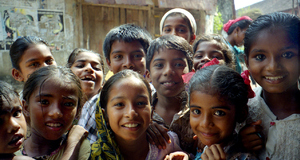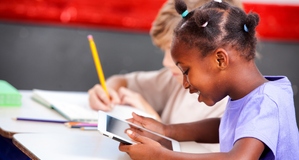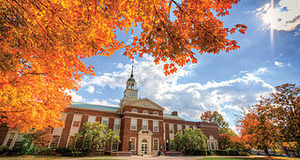From Earth Common Journal VOL. 3 NO. 2Ecological Education: Proposal of Implementation Programs in Romania
IN THIS ARTICLE
KEYWORDS
A Case StudyThe following is a case study of the author’s country of origin, Romania, and its journey back to sustainable living. Her article describes, outlines, and explains how Romania has undergone change with respect to its approach to sustainable living. She provides the political and economic background that underpins the struggles that Romania has undertaken to return to its sustainable practices and lifestyle. Ecological education offers a solution. IntroductionOn the 22nd of December, 1989, Romania freed itself from the Nicolae Ceausescu communist regime, and entered into a new era of freedom of information, democracy, and the right of propriety. Romanians have the power to change their faith, but also the power to destroy it. The revolution had brought a new democratic regime, and an inexperienced civil society, that did not know to appreciate the natural resources and the economically advantageous perspective it had inherited. Instead of keeping up with the new democratic situation, destruction became the new rule of order. Hiding behind the curtain of the new democratic regime, many opportunists took advantage and started a systematic process of changing the environmental image of a country that was known before as having pristine waters, wonderful forests, and wild panorama. Deforestation was one of those destructive processes that changed the composition of the soil, the water and the natural animal habitats (Educatia Ecologica, 2010-2013). Within the last twenty years, the cutting down of trees has become a very big issue in Romania. People believed that it was okay to cut down a tree, and that no one was going to miss it; and for a while this “nobody cares” practice was working, but soon enough others in the circle got cut, and the first signs that the trees were important started to show. With significant sections of the forest gone, there was no natural barrier to keep the water away from Romanian villages when rain hit the ground. The deforestation, as a result of the unregulated practice, had as an end result the destabilization of the ecological system (Appendix I provides an excellent glimpse of the change in European forests in the past years) (Energy, transport and environment indicators – Eurostat –Europa, 2012). Consequently, some villages have started to slip away from the old foundations they were initially built on. No matter how many warnings the population received from the forest authorities, the cutting did not stop until recently. People had misunderstood the right of possession, a right that came without the support of specific education and without the clear understanding of what civic responsibilities mean in relation to forest ecology. The people, who had official documents to prove that that particular forest belonged to their ancestors, and that the communist regime took that property away, got that property back from the government. As a result, without thought as to the longterm effects of their actions, the people who entered into possession of a forest started to cut the trees for immediate short-term revenue. If we want to have a sustainable economy we have to preserve nature. Everything on planet Earth lives in a fragile equilibrium; once you start to destroy one element, the other dependent elements fall down. With no forests, animals are forced to live in a confined space, scarcity in food and shelter coerces them to migrate to spaces populated with humans, and fear and destruction open a new gateway to possible extinction. The image below demonstrates how spruce and fir forests were destroyed gradually since the forests were returned to their initial owner. Figure 1 for example: This image was taken by NASA, which is currently assisting the Institute of Research and Forestry Arrangement in Romania to monitor the forests, this picture, taken after the deforestation occurred, shows what is left of the forests in Romania. During the communist regime, the in-school curricula taught good practices about how to behave in the natural world. There was a discipline taught called Knowledge about Nature, which was studied in 4th grade and had a good practical side to it. We used to have special classes about planting trees and would go inside the natural reservation to clean the forests and waters and remove any unwanted traces of civilization. Nowadays this practice has stopped. We study Ecology only as a concept, and nobody is bothering to take into account the practical side of this discipline. Teachers not only need to explain the concepts of nature and what Ecology means, but also demonstrate what preservation and conservation can do for improving people’s quality of life. The children have learned from news and media that the forests in Romania are an endangered species, and they know that they can help, but nobody shows them the way. As we can see, everything lives in collaboration, and the disappearance of one unit triggers the destruction of the next one. Ecology has to go hand in hand with the education and preservation of nature. Thankfully in 2009, some civil societies started to take action and they created a movement called “Prinde Radacini” or, in English, “Romania gets roots.” It was a campaign organized by Realitatea TV and sustained by the OMV Petrom oil and gas company (http://www.petrom.com). In this campaign they started to plant trees in deforested areas, all on a voluntary basis. But this is not enough; it is only one drop in the sea. After Romania become part of European Union in 2007, politicians were forced to understand that forests and the environment are very sensitive issues in Europe, and they started to pay closer attention to what was happening at a national scale. From Europe came the idea of creating a model of earth education that would bring economic growth. In this paper I will focus on an educational program that brings ecological education back into schools. This program is very important for creating awareness about the respect and proper use of natural resources and environment. As David E. Gammon, Jennifer M. Platania, Susan Manring and David Muñoz envisioned: Imagine an economic system structured so that decisions made by purely self-interested individuals result in environmentally beneficial outcomes. Imagine a system that rewards businesses seeking to achieve more than simple compliance with environmental regulation. Such a system is possible if prices accurately reflect the magnitude of environmental costs and benefits. In such a system, innovation that improves environmental performance would mean more than just good public relations; it would improve a company’s bottom line. Everyone would win. (2011) We have discovered a project, which will be the case for ecological education that tries to apply this idyllic image. The case being proposed is based on a European project, realized in partnership between two countries: Romania and Hungary. The motto of the project: “Two countries, one goal, and one common success!” is self-explanatory and is a collaborative cross-border economic and environmental program that started in 2010 and will end in December, 2013. The project was developed for a society called Societatea Carpatina Ardeleana from Satu Mare County, Romania. This research is part of the project under the title “Development of the Environmental Education Institutional Structure in the Cross-border Region”, also part of the Cooperation Cross-border Program Grant Hungary –Romania 2007-2013. Financed by the European Regional Development Fund (ERDF), the focus of the report was on Educational Ecology. This subject is an umbrella of terms that covers very well the themes of PRME for this year. This project studied the quality of the air and environment. In this case, education about environment is not only a form of learning but also a tool that gives solutions for the environmental problems and key in taking care of the natural resources (and the forests are a very important part of the eco-system in this region). The project also talks about the Education about the Environment, which is the theoretical part of this program. This part ensures that the people understand the way natural systems function, and also the impact that human activities are having on natural systems. When applying the theoretical knowledge, people involved in this process will be able to make appropriate decisions in regards to the environment. The second part of the project deals with the applicability of the Education into the Environment. This part will ensure the practical experience of learning about the environment by being directly in it This can be done through the following methods: collection of data on the terrain, or stimulation of the involvement and empathy for the environment by being actively there and observing the changes. The concluding section, Education for Environment, presents the project’s final product: education in and about the environment. Development of a sense of responsibility for the environment is a direct result, and motivates the individual to take an active part in protecting the environment. Moreover, that individual develops the wish and capacity to change his or her life to be in harmony with nature. Both the teachers and the students are getting involved in this concept, by learning to take care of the natural resources. The ecological education, which is the main component of my case, presents the educational process in the Romanian schools through five fundamental elements that are based on individual concepts:
Why is Ecological Education important? This discipline helps students to be aware of the environment and also makes them to be aware of their responsibilities for the environment in which he or she lives. The Ecological Education brings up the idea that the problems that are in the environment, a great majority of them, are caused by the people. When students learn about environmental education they are able to think about the proper solutions that can repair the damages that they have inherited. The students are taught how to perceive the true values, and learn that the protection of the environment has to become a “way of life” (Educatia Ecologica, 2010-2013, p. 4). This project comes as an answer to the relationship that coexists between ecological education and the school curricula. Educational Ecology is an answer to the new worldwide priority of teaching future generations about the environment. As a part of this new wave, Romania has the following disciplines of study: Education from the point of view of ecology and Education for the conservation and protection of the nature. Another question that this project poses is who is going to teach ecological education in kindergartens, elementary schools or high schools? Until now, the people involved in teaching this new discipline were those who were teaching Geography and Knowledge about Nature. At this moment, other teachers could be involved in this new discipline, teachers that are teaching mathematics, physics, mother tongue, religion, drawing, physical education etc. According to this research, not only teachers should get involved in the process of teaching of this discipline, but also members of not-for-profit foundations, ecological associations, and any other organizations that are promoting and supporting the ecological education. The teaching of this discipline from the side of non-traditional teachers involves learning a huge amount of information in regards with the environment, and also implies an understanding of the connections that coexist between the environment itself and the influence (positive or negative) of the human imprint. In the following diagram, the authors of the study have shown the relationship that is generated by Educational Ecology with Physics, Maternal Languages, Art, Biology, Mathematics, Religion, Chemistry, Other Subjects, Sociology and Geography (p. 7), as shown in the figure below. Why is it so important to get Educational Ecology back into the school curicula? The major reason is the idea that the human population must take conscious action for the maintenance and improvement of the quality of nature. In Romania, the vast majority of the students don’t have a formal educational ecology background: they leave empty paper bags, plastic bags, and cans in the schoolyard. This demonstrates that the children may not be exposed to the recycle inititive by neither their teachers in the school curicula nor by their parents at home. At this moment, Ecological Education is an elective course. As one of the ex-ministers of Environment stated “in schools, at this moment, we only have one hour dedicated to the study of the Environment, and is not enough” (Korodi Attila, 2010). According to Attila, Romanian schools need more hours in the curicula of the elementary and high schools dedicated to the study of Educational Environment. The requirements of the European curricula model called Green Package recommend that the environmental model be integrated into all school subjects such as mathematics, physics, chemistry, etc. The same minister reaffirmed that the environment problems should be studied not only in one textbook but also be part of the other textbooks, as a way of introducing the Green Package in as many subjects area as possible. (Combes, 2005). At this moment, Romania has three projects and programs for ecological education awareness such as:
Methods Used for Teaching Educational Ecology in the Romanian SchoolsEducational Ecology can be realized through any type of school activity such as the observation of nature, experiments, trips, powerpoint presentations, games, ecological labyrinths, etc. The themes that can be followed are introduced by the function of the chosen subject or activity. For example, some potential themes could be: “To protect nature,” “Pollution in different worlds,” “Wintering with the plants and animals,” “Our knowledge of forests”, “Nature awakening to life,” “Young tree, old tree,” “Nature’s lessons for us,”and “Masks and ecological customs.” The specialists in the theory and educational practice define the above method as a “way of actions that helps the students, under the mentorship of the teachers to learn about the environment, and to develop skills, aptitudes and attitudes towards this discipline of study” (Educatia Ecologica, 2011-2013, p. 11). Methods and Techniques Used in Teaching Ecological Education
These methods have as a goal the knowledge and use of the notions about the environment to explain the same objective phenomena and the relation from the natural environment, development of the spirit of observation, investigation and research for the students, formation of a set of positive values for the environment, and motivation for participation in the maintenance of the quality of the environment.Continued on Next Page » Suggested Reading from Inquiries Journal
Inquiries Journal provides undergraduate and graduate students around the world a platform for the wide dissemination of academic work over a range of core disciplines. Representing the work of students from hundreds of institutions around the globe, Inquiries Journal's large database of academic articles is completely free. Learn more | Blog | Submit Latest in Environmental Studies |




























